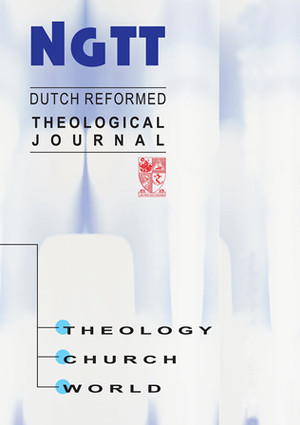Om God in goed en kwaad te sien. Oor twee vorme van teodisee
DOI:
https://doi.org/10.5952/53-0-216Abstract
Seeing God in good and evil: Two forms of theodicyThe author distinguishes between two theodicy questions: (1) Why does God permit evil and suffering to happen? (2) Are evil and suffering compatible with the existence of God? In answer to the first question: the author pleads ignorance. We cannot know God’s thoughts and motives. He does show, however, that there are several possible motives and reasons. The answer to the second question is shown to be positive. The author uses the tsunami of 2004 as his main example, and shows in his discussion that human responsibility plays a more important role than is often thought. Following Vincent Brümmer, he argues that in the final resort, our view of the balance of good and evil in the world is a question of religiously motivated interpretation.
Downloads
Published
2012-12-21
How to Cite
Brand, G. (2012). Om God in goed en kwaad te sien. Oor twee vorme van teodisee. NGTT | Nederduitse Gereformeerde Teologiese Tydskrif, 53(Supp 2). https://doi.org/10.5952/53-0-216
Issue
Section
Articles | Artikels
License
Copyright of all NGTT material belongs to the Pieter de Waal Neethling Trust (PDWN Trust). The PDWN Trust is a trust fund established in 1932 with the aim of promoting quality theological research and publications.
The PDWN Trust pledges to maintain a legitimate scholarly record of the author's work and to defend the author's article against plagiarism and copyright infringement.
The PDWN Trust is committed to full Open Source publishing. This means that all articles published in NGTT will gradually be made freely available online. Authors maintain the right to:
- Share and self-archive their work.
- Make printed copies of their article for educational use.
- Present their article at a meeting or conference and distribute printed copies of the article
- Adapt and expand their published journal article to make it suitable for their thesis or dissertation.
- Republish the article (ensuring that the original article is cited as published in NGTT).
For any questions or queries in this regard, please contact the Editor.


